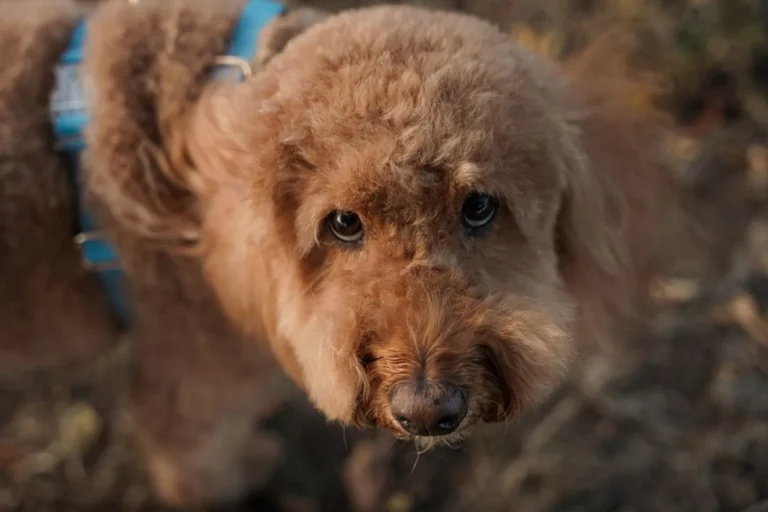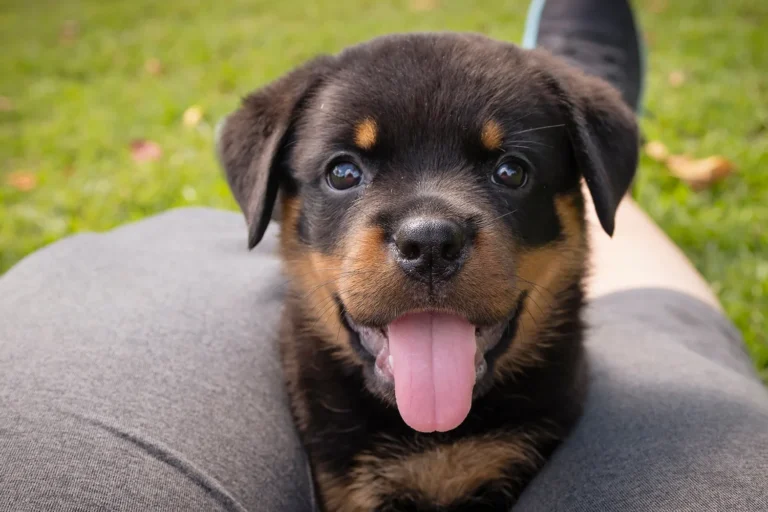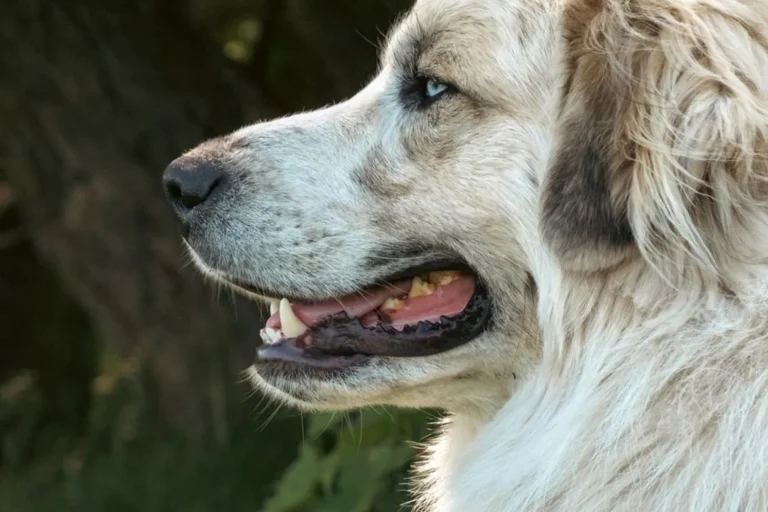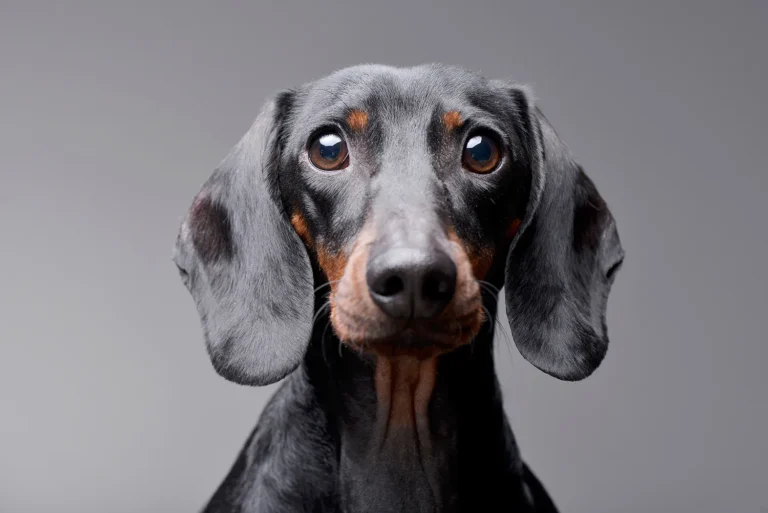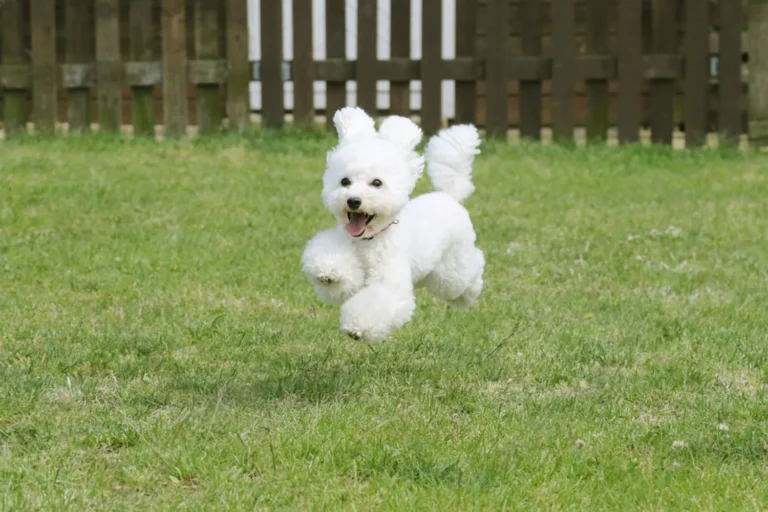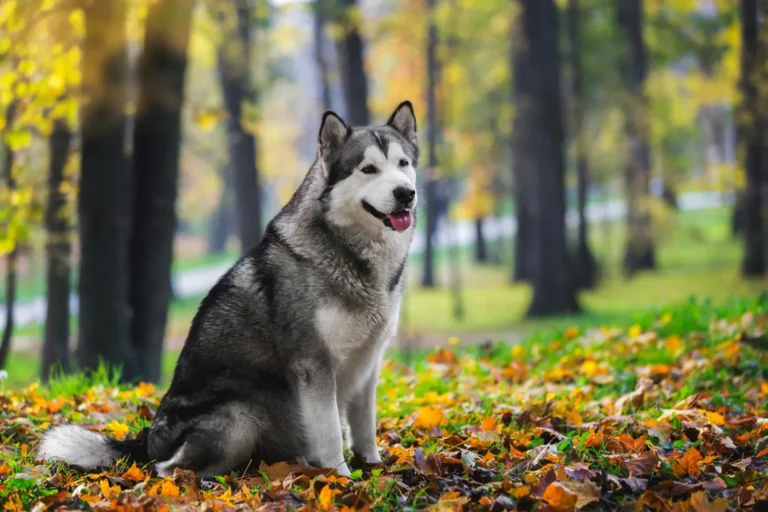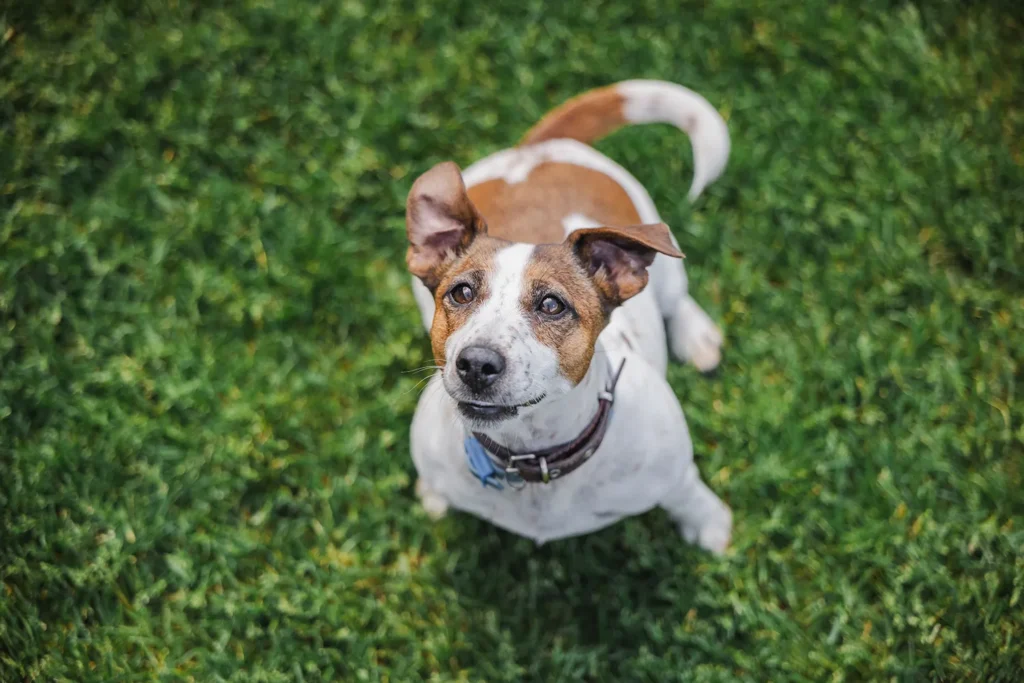
If you want a small dog with big energy and a huge heart, a Jack Russell is hard to beat. They’re confident, loyal little firecrackers who thrive in active households perfect for folks who love walks, playtime, and a bit of daily adventure. I remember bringing home my first Jack Russell and being amazed at how quickly he picked up basic commands by day three he was sitting, staying, and giving me that “what’s next?” look.
Their intelligence makes them a great first pet, especially if you’re ready to engage their busy brain. Short training sessions, puzzle toys, and plenty of fetch go a long way. A tip I swear by: mix in sniffy walks and a quick game of hide and seek with treats. It keeps them happy, teaches focus, and helps channel all that wonderful energy into good habits.
History and Origin of the Jack Russell Terrier
Picture the English countryside in the 1800s, horses clattering down narrow lanes and fox hunts crisscrossing hedgerows. That’s where the Jack Russell story begins. Reverend John “Jack” Russell wanted a small, fearless hunting dog that could keep up with the horses and slip underground after a fox without being mistaken for one. He bred for mostly white coats so the dogs stood out against the brush, and that vision helped shape what became the Fox Terrier and, in time, the lively Jack Russell we know today. Their roots go back to the old English White Terrier, an ancestor that contributed that bright white coat and a good dose of grit.
What I love about their origin is the idea of “tempered aggression.” These terriers weren’t bred to kill; they were bred to bolt foxes from their burrows loud, confident, and determined, but under control. I once watched a friend’s Jack Russell freeze at the mouth of a drainage pipe in our local park, give a sharp, measured bark, then step back as if to say, “Your move.” That’s the old instinct shining through: pressure the quarry, don’t destroy it.
You still see their history in their habits. A breeder I met in Devon told me she trains her pups to focus their energy on problem solving games before they ever see a field hide and seek with toys, scent trails through the garden, short bursts of fetch. If you bring one home, lean into that heritage. Offer plenty of brain work, consider earthdog or scent work classes, and give them a designated “dig box” so your flowerbeds survive. Their past made them bold, bright, and tireless. Respect that, and you’ll have a small dog with a giant, purposeful heart.

What Is a Jack Russell?
Quick on their feet and big in personality, Jack Russells were bred first and foremost to work. They’re now recognised by the Kennel Club as a pedigree breed, which stirred up a bit of debate especially from the Jack Russell Terrier Club of Great Britain, who like to remind everyone that, underneath the ribbons, this is a hardworking little terrier. I tend to agree. The Jack Russells I’ve known would rather be chasing a scent trail or conquering a puzzle toy than posing for photos. One of mine once outsmarted a baby gate just to get back to his favorite squeaky ball mission first, nap later.
People often mix up the Jack Russell with the Parson Russell Terrier. They’re cousins, but the Parson is generally taller, with a broader chest and a more show ring look, while the Jack Russell stays a bit more compact and workmanlike. At the dog park, the difference pops when they stand side by side same spark in the eyes, different proportions. If you’re thinking of bringing one home, ask breeders or rescues which type they have. It helps match expectations for size and energy.
As for looks, most Jack Russells are mostly white with black or tan markings. Their skin is often freckled little spots you won’t notice through the coat until bath time or when they roll over for a belly rub. I still remember the first sudsy wash revealing a constellation of tiny speckles like a secret map. Coats can be smooth or a bit scruffy, and they do shed, so a quick weekly brush keeps the tumbleweeds down. My advice: give them a job every day fetch, scent games, short training bursts and keep your garden fences solid. A busy Jack Russell is a happy, delightful whirlwind; a bored one becomes a furry mastermind with his own ideas.

Who Is a Jack Russell Best For?
If you’re the sort of person who laces up your shoes before sunrise or can’t resist a good weekend hike, a Jack Russell might just be your shadow. These little dynamos are bright, busy, and always ready for a job. They don’t just need exercise; they crave it both physical and mental. I used to take a neighbor’s Jack Russell, Pip, on my morning runs. We’d clock three miles and he’d still come home asking for a round of fetch and a few brain games. Think puzzle feeders, scent work, trick training, or a flirt pole in the backyard. One of my favorite rainy day games is the muffin tin challenge: tennis balls over treats so they have to “think” their way to the snacks.
They can live with other animals and kids, but honest truth they’re excitable and very keen. I find they do best with older children who understand how to give space and follow rules. A friend of mine raised her Jack Russell with a very patient cat, and they became a funny little duo, but she still managed doors and feeding time to keep the peace. Small furries like rabbits, hamsters, or even feathery backyard chickens can be tough for a Jack Russell’s chase instinct. If your home already has tiny pets, plan for careful introductions, baby gates, and rock-solid supervision. Training “leave it,” impulse control, and plenty of structured outlets for that hunting brain go a long way.
House wise, these dogs can thrive anywhere from a busy family home to a cozy apartment provided their needs are met. I once dogsat a Jack Russell in a city flat who “announced” every hallway footstep like he was the building’s security detail. They can be vocal, so be realistic: if you’re gone for long stretches or short on walking time, it may strain your schedule and your neighbors’ patience. Two brisk walks a day plus play and training breaks are a good baseline, with a slow sniffy stroll tossed in to tire their nose and mind. Leaving a frozen stuffed Kong before you head out, closing curtains to block window triggers, and teaching a solid “quiet” can help. And if your days are hectic, a midday dog walker or doggy daycare can be a relationship saver.
In short, a Jack Russell suits active people who enjoy engaging with their dog moving, teaching, laughing, and managing that lively spark. Give them a job, a routine, and your attention, and they’ll give you a hilarious, big hearted companion who keeps life interesting.

Jack Russell Grooming & Shedding
If you share your life (and your couch) with a Jack Russell, get ready for a steady sprinkle of white hairs. I wear a lot of dark jeans, and I’ve learned to keep a lint roller by the door and another in the car. The good news is that their short, coarse coat naturally sheds and more or less “self maintains,” so you won’t be handing over piles of cash at the groomer every month.
A simple brushing routine makes a world of difference. I like a rubber curry brush or a grooming mitt five minutes a few times a week really cuts down on the tumbleweeds and keeps the coat shiny. Do it outside if you can; I made the mistake of brushing on the living room rug once and it looked like it snowed. Some Jack Russells have slightly longer or wiry fur around the face and legs. If yours does, a tiny tidy up is all that’s needed just a careful trim around the eyes and muzzle. Don’t overdo it; that scruffy charm is part of the package. A breeder I spoke with in California mentioned that some rough or broken coats can benefit from light hand stripping once or twice a year, but most pet Jacks are fine with minimal maintenance.
When it comes to baths, less is more. I aim for about every six weeks, unless there’s been a mud puddle incident or, worse, a mysterious “eau de something dead” roll at the park. Over bathing can strip those natural oils and actually trigger more shedding and dander. Use a gentle dog shampoo, lukewarm water, and rinse like you mean it. A quick brush after they’re dry helps whisk away the loosened hairs.
A few small habits help keep shedding manageable: wash their bedding weekly, vacuum high traffic areas often, and feed a balanced diet omega-3s can support skin and coat. I notice a slight uptick in shedding during spring and fall, so I boost brushing on those weeks. And remember, a little fur on your clothes just means you’ve been properly loved by a Jack Russell.

Do Jack Russells Bark a Lot?
Short answer: they can be pretty chatty, especially when something exciting moves like the postman, a squirrel, or that one leaf that dares to blow across your yard. My Jack Russell used to sound the alarm at every rustle. It’s in their DNA to alert their humans to prey and movement, so some barking is normal. The trick is teaching them when to speak up and when to zip it.
Start early if you can. I like to use a clear cue “quiet” or “enough” then wait for even a second of silence and immediately reward with a treat or praise. That tiny pause is golden. I’ll also redirect with a simple task: “sit,” “watch me,” or “go to your mat.” When the doorbell rings, I practice a calm routine: bell sound, sit, treat, repeat. Consistency turns chaos into muscle memory. And don’t forget: rewarding calm, quiet moments throughout the day teaches them that silence pays off, not just barking.
A tired Jack Russell is a quieter Jack Russell. Daily exercise isn’t optional think brisk walks, a good game of fetch, and brain work like scent games or puzzle toys. On busy days, I scatter their kibble in the yard and let their nose do the work; it takes the edge off that busy brain. Manage the environment too: close curtains facing Squirrel TV, play light background noise, and avoid accidentally rewarding barking by rushing to the window or opening the door right away.
If barking seems excessive or comes out of nowhere, a chat with a trainer or vet can help. With clear cues, positive reinforcement, and enough activity, that mighty voice becomes manageable and your ears will thank you.
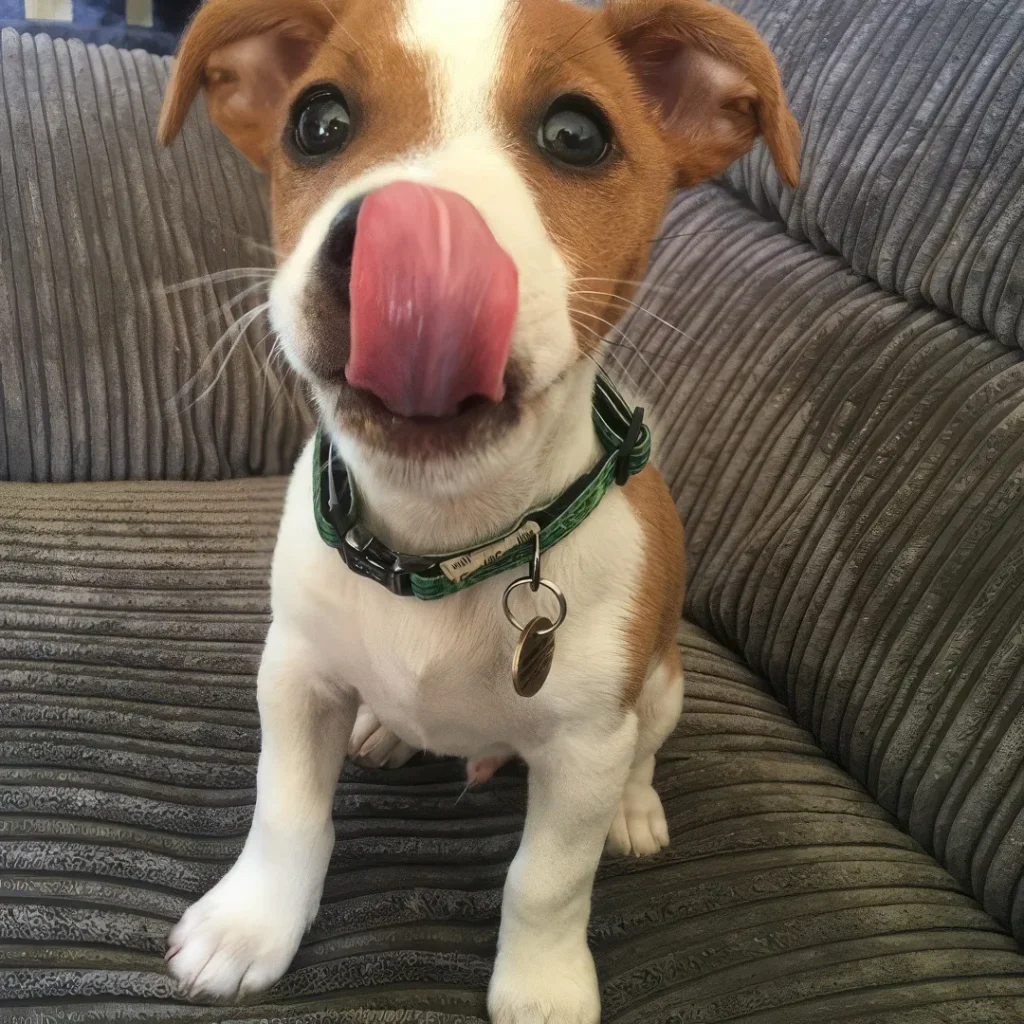
What Is the Average Weight and Height of a Jack Russell?
If you’ve ever tried to weigh a wriggly Jack Russell pup on a bathroom scale, you know it’s part science, part circus act. I used to step on the scale with my pup in my arms and do the math he thought it was a game, I was just trying to get a number. As with any breed, if you’re worried about your dog’s size or weight, a quick chat with your vet is always best. And remember, pups grow at their own pace comparing yours to the one at the park will only make you both stressed.
Jack Russell Terriers generally finish growing by around one year old. They shoot up quickly in the first six months: after about a month they typically weigh 1 to 1.8 kg, then they tend to add roughly 1 kg each month until six months of age, when many sit around 5 kg. After that, things slow down, and by their first birthday most settle at about 5-6 kg. I kept a simple growth chart on the fridge nothing fancy and it was reassuring to see a steady trend, even with the occasional growth spurt that left his ears a little too big for his head for a week or two. https://en.wikipedia.org/wiki/Jack_Russell_Terrier
Height wise, a fully grown Jack Russell usually measures about 25-40 cm at the shoulder, depending on breeding. Some lines are a bit leggier, others more compact. If you want to measure at home, stand your dog on a level surface and measure up to the highest point of the shoulder (the withers). I used to mark the height on a doorframe like parents do with kids silly, but it made those puppy months feel like a fun project.
A few quick tips from experience: aim for a healthy body shape rather than a specific number on the scale you should be able to feel ribs without them poking out. Keep exercise age appropriate; Jack Russells love to zoom, but avoid too much jumping while joints are still developing. And if anything feels off sudden weight changes, sluggishness, or persistent ribbiness call your vet. These little dynamos may be small, but they grow into big personalities right on schedule.

Are Jack Russells easy to train?
With Jack Russells, the trick isn’t whether they can learn it’s how you channel that rocket fuel energy into something useful. These little dynamos are smart, lively, and absolutely love having a job to do. Start early. The sooner you guide that busy brain, the fewer chances they have to invent their own games, like “redecorate the couch” or “collect every sock in the house.”
Short, fun sessions are your best friend. I used to set a timer for five minutes, do a burst of training sit, down, a quick spin and then release my Jack Russell to zoom around the yard. They soak up praise like sponges. Make a big fuss when they get it right: cheerful words, happy voice, even a gentle pat on the head to let them know they nailed it. They adore the attention, and it keeps them coming back for more.
Consistency matters a lot. If you let a Jack Russell bend the rules once, they’ll remember and try again. I learned the hard way with my first JRT: I laughed the first time he hopped on the sofa without being invited, and guess what? He decided the sofa was his throne from then on. Be confident, keep the rules the same for everyone in the house, and follow through. They respect clear boundaries, and it actually helps them relax.
Exercise isn’t optional; it’s part of the training plan. A tired Jack Russell is a focused Jack Russell. Mix brain and body work: a brisk walk paired with a few “sit and stay” drills, a game of fetch with a tidy “drop,” or a tug session that ends with a calm “leave it.” I swear by puzzle feeders and scent games on rainy days they zap that pent up energy before it turns into chewed shoes. My friend once left a pair by the door “just for a minute.” You can imagine how that ended.
Socialization while they’re young is just as important as obedience. Let them meet friendly dogs, calm adults, noisy kids, and the mail carrier. I took mine to a puppy class, the farmers’ market, even a quiet hardware store. All those new sights and sounds build confidence and reduce the chance of pushy or reactive behavior later on.
Bottom line: Jack Russells are quick studies and thrive on attention and activity. Keep lessons short and upbeat, praise often, and weave training into daily life. Do that, and you’ll have a clever, spirited companion who chooses good behavior because it’s fun and because it gets them the thing they love most: you.
How Do Jack Russells Behave? A Look at Their Temperament and Personality
Jack Russell Terriers are little dynamos lively, headstrong, and bursting with love for their people. They’re the kind of dog that greets the morning like it’s a party and expects you to be the DJ. The first Jack Russell I walked would rocket after a tennis ball like it was his life’s mission, then curl up in my lap as if to say, “Okay, now we nap.” That mix of go go go and cuddly loyalty is classic Jack.
Because they were bred as hunting dogs, their senses are always “on.” A squeaky toy, a squirrel’s tail flick, the rustle of a bush these can flip a switch from calm to chase in a blink. I learned pretty quickly that the doorbell meant a sprint to the window unless we practiced. Early training is essential: teach focus cues like “watch me,” a reliable recall, and a solid “leave it.” Keep sessions short, fun, and frequent. Food rewards work well, but many Jacks will work just as hard for a quick game of tug or a chance to chase a ball.
Give that busy brain a job and you’ll have a happier dog. Puzzle feeders, scent games in the yard, and beginner agility are fantastic outlets. A breeder I spoke with once said, “They have an off switch you just have to give them something to switch off from,” and she was right. Manage their environment (secure fences, leashed walks where wildlife tempts), socialize them early, and teach a calm “settle” on a mat. My friend’s Jack learned to snooze under the table during family dinners after two weeks of practicing that cue. With clear boundaries and plenty of mental and physical exercise, their spirited nature shines in the best way: brave, affectionate, and delightfully full of personality.

Do Jack Russells have common health issues?
Short answer: they’re generally tough little dogs, but like all breeds, Jack Russells do have a few health quirks worth watching. The good news is that most of these can be managed with regular vet care and a bit of daily attention at home. My first Jack Russell could out hike dogs twice her size, but she still had her “maintenance list,” and staying ahead of it kept her happy and spry well into her senior years.
Dental abnormalities
That adorable, compact muzzle can mean crowded teeth, which trap plaque and lead to gum disease. Bad breath, tartar, and cheek rubbing are early clues. Daily brushing is the gold standard even three times a week helps. I taught toothbrushing as a “trick” with tiny treats and a silly song, and it stuck. Dental chews, water additives, and professional cleanings as recommended by your vet go a long way.
Obesity
Jack Russells are spring loaded, but they’ll still pack on pounds if their calories outpace their zoomies. Extra weight stresses joints and organs. Measure meals (don’t eyeball), go easy on treats, and build in real exercise: brisk walks, fetch, and scent games. One winter I swapped our evening walk for indoor nose work, and it kept my guy fit and sane when the sidewalks were icy.
Glaucoma
Increased pressure inside the eye can come on quickly and cause pain and vision loss. Watch for redness, squinting, a cloudy or “bulging” eye, or sudden bumping into things. This is an emergency don’t wait it out. Ask your vet to check eye pressure during annual visits, especially as your dog ages.
Cataracts
Cloudiness in the lens is more common in older dogs and can dim vision over time. Many dogs adapt beautifully. Keep furniture in consistent spots, add runners to slippery floors, and use your voice to guide. If cataracts progress, your vet can discuss whether a specialist consult makes sense.
Liver problems
“Liver issues” covers a few different conditions, but early detection helps with all of them. Subtle signs include decreased appetite, vomiting, lethargy, increased thirst, or a yellow tinge to gums/eyes. I like doing routine bloodwork at annual checkups (and twice a year for seniors). A friend’s Jack Russell had mildly elevated liver enzymes on a routine screen, and a simple diet tweak plus meds got things back on track.
Cushing’s disease
This hormonal disorder often shows up as increased thirst, more frequent urination, a big appetite, thinning hair, or a pot bellied look. It’s managed with medication and monitoring once diagnosed. When I noticed my dog draining his water bowl twice as fast, that was our nudge to see the vet.
Hemolytic anemia and thrombocytopenia
These immune mediated conditions are serious: one attacks red blood cells (leading to weakness and pale gums), the other reduces platelets (causing bruising or bleeding). If your Jack Russell seems suddenly exhausted, has white or yellow gums, dark stools, nosebleeds, or unexplained bruises, go straight to the vet. Fast treatment can make all the difference.
Bladder and kidney stones
Straining to pee, frequent attempts with little output, blood in urine, or frequent licking are red flags. Encourage water intake with fresh bowls in a couple of rooms and consider a wet food topper. Your vet may recommend a special diet to dissolve or prevent certain stone types. If your dog can’t pass urine, that’s an emergency.
Bone and joint issues
Knees (patellar luxation) can be a soft spot. Keep your Jack Russell lean, use ramps for furniture and cars, and warm up with a short leash walk before intense play. I trained a “paws up” stretch and a gentle figure eight to help keep those muscles ready for action.
Deafness
Some Jack Russells can be born with hearing loss. If you suspect it, a BAER test can confirm. Deaf dogs do wonderfully with hand signals and vibration cues (never shock). My neighbor’s deaf Jack Russell is the most attentive dog at the park she checks in visually and never misses a cue.
Heart disease
Heart murmurs and other cardiac conditions can develop with age. Annual exams help catch changes early. Signs to watch: coughing at night, slowing down on walks, or fainting. Good dental care supports heart health too, so those toothbrush sessions pull double duty.
A few simple habits will stack the odds in your favor:
– Keep them lean and active with daily mental and physical exercise.
– Brush those teeth and schedule cleanings as your vet advises.
– Do yearly checkups (twice yearly for seniors), including bloodwork and eye/heart checks.
– Trust your gut if something feels off, call your vet.
Most Jack Russells are sturdy, joyful companions who stay lively well into their teens. A little proactive care now means more hikes, more zoomies, and more snuggles later. And honestly, that’s the best payoff there is.
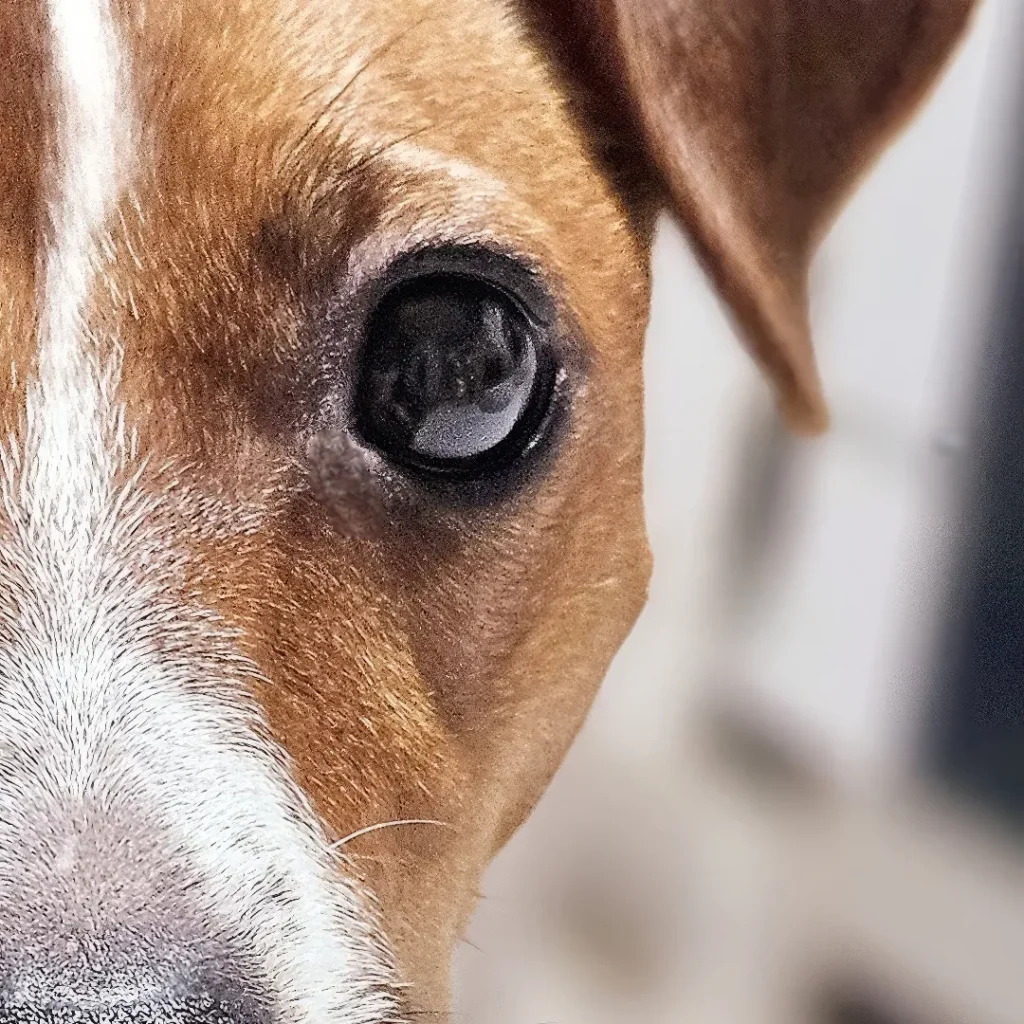
What Is the Lifespan of a Jack Russell?
Like many small breeds, Jack Russells tend to stick around for a good while most live about 13 to 16 years. I’ve known a few who happily chased tennis balls well into their teens. Of course, it varies with genetics, breeding, and any underlying health issues. Good habits help: keep them lean, schedule regular vet checks, brush those terrier teeth, and balance their big energy with joint friendly exercise and brain games. If you’re choosing a puppy, ask about health testing. With care, you can enjoy many lively, mischievous years together.
How Much Should You Feed a Jack Russell?
These little dynamos can put on an Oscar worthy performance at dinnertime, but don’t be fooled Jack Russell Terriers are prone to overeating and weight gain. I learned that the hard way with my friend’s JRT, who successfully convinced everyone he needed “just a little more” after every walk. Within a month his harness was snug. The fix? Measure every meal and stick to a routine.
Feeding twice a day works well for most adult Jack Russells. How much they need depends on their size and activity level your couch cuddling buddy will need fewer calories than a frisbee addicted fetch machine. Start with the dog food brand’s guidelines, then adjust based on your dog’s body condition. I like the simple rib check: you should be able to feel ribs without digging and see a slight waist from above. If the waist disappears, cut back a bit; if your dog seems ribby or low on energy, talk to your vet about increasing.
Choose a high-quality food to support healthy skin, a shiny coat, and steady energy. Use a measuring cup (or a small kitchen scale) instead of eyeballing portions, avoid free feeding, and remember treats count aim to keep them to about 10% of daily calories. And when in doubt, your vet is the best guide for dialing in the right amount for your particular little firecracker.
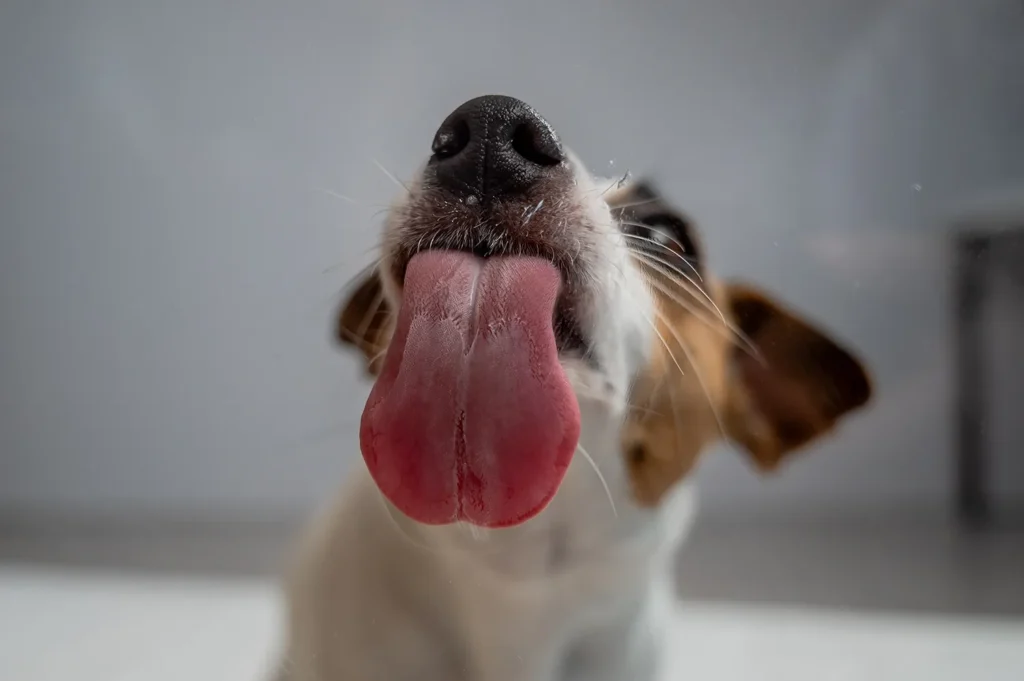
Jack Russell Terrier FAQs
Are Jack Russell Terriers noisy in comparison to other dogs?
Jack Russells do have a reputation for being yappy, and honestly, I get it. That spark plug energy can bubble over into barking when they’re excited, bored, or just bursting to tell you a leaf moved outside. The good news is that a solid routine makes a huge difference. Daily walks (the kind where they get to sniff and think, not just sprint), short training sessions, and puzzle toys give their brain a job and take the edge off the noise. Start training early and reward quiet moments teach a “settle” or “enough” cue and be consistent. I once dog sat a Jack who barked at the doorbell like it owed him money. A week of doorbell practice, paired with treats for sitting quietly on a mat, turned chaos into a polite little alert. Management tricks help too frosted windows, background noise, and a regular nap schedule all keep the barking from running the show.
Is it true that Jack Russells can make good guard dogs?
Yes, in their own compact way. Jack Russells are fiercely loyal, alert, and quick to sound the alarm, which is exactly what you want from a guard dog that’s more about alerting than intimidating. Their vocal nature which can be inconvenient at times is actually perfect here: they won’t miss a delivery driver, a squirrel, or a creaky gate. It’s smart to train an “off switch” so the barking doesn’t roll on forever. I like a simple sequence: alert bark, thank you, go to your mat, treat for quiet. Mine once warned me about a window latch that hadn’t clicked shut during a storm, and I was genuinely grateful for that noisy little security system.
Can a Jack Russell Terrier be around young children?
All dogs should be supervised around young kids, no matter how sweet they are. Children can make sudden movements, loud noises, or grab in ways that upset a dog. With Jack Russells, how they behave around children really comes down to training and socialization many are wonderful family companions. That said, because they’re trained hunting dogs by heritage excitable, driven, and bursting with personality they’re generally not recommended for families with children under eight. If you do have older kids, set clear rules: no hugging, no disturbing the dog while eating or sleeping, and use calm voices and soft hands. Give your Jack a safe zone (a crate or gated room) where they can retreat and never be bothered. My niece learned to toss treats onto a mat to invite interaction rather than rushing in for cuddles, and the difference in trust was night and day. Honestly, waiting until my own kid was a bit older made everything easier and happier for everyone.
Where can I find reputable Jack Russell breeders?
Do your homework and take your time. Research the breeder, ask questions, and be wary of “too good to be true” prices. Low cost puppies can sometimes come from puppy farms, which are both unethical and more likely to produce dogs with health or behavioral problems. A reputable breeder will be transparent: they’ll welcome your visit, introduce you to the dam (and sometimes the sire), explain socialization practices, and discuss health histories. Look for a breeder who is a member of the AKNC (Australian National Kennel Council), and ask for their Breeder Identification Number (BIN) or Breeder Registration Number (BRN). I always bring a little checklist: vaccination records, deworming schedule, contract with return policy, and what early training the puppies have experienced. And if you’re open to it, consider breed specific rescues plenty of bright, bouncy Jack Russells are looking for homes, and rescue coordinators can help match you with a temperament that fits your life.
With the right structure and expectations, Jack Russells are an absolute riot in the best possible way. Channel their energy, train early, and you’ll have a loyal little shadow who keeps you on your toes and makes you laugh every single day.
Disclaimer:
This article is for informational purposes only and doesn’t replace professional veterinary or training advice. Always consult a certified vet or dog trainer for guidance specific to your pup.
